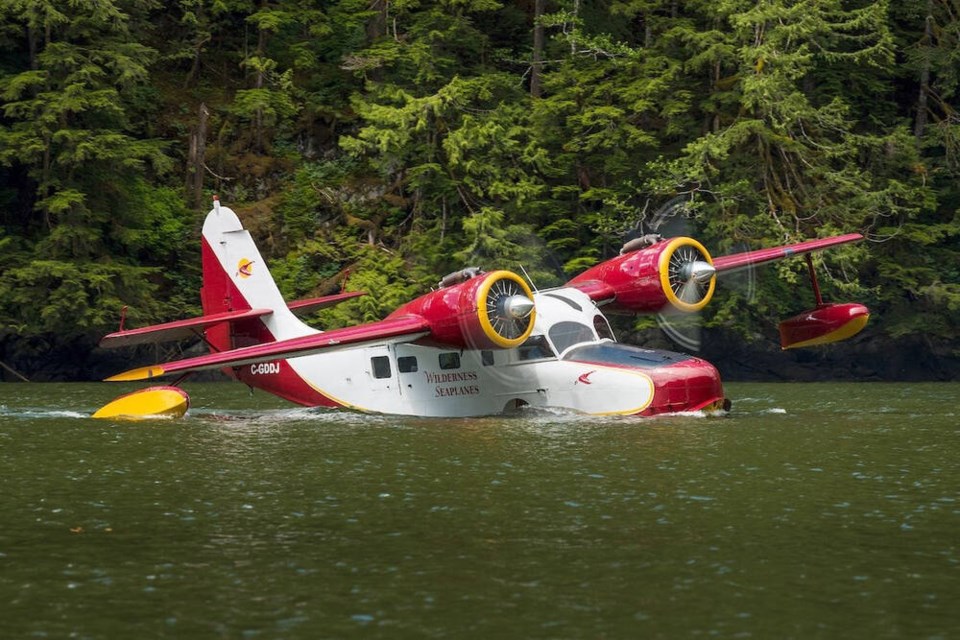Four passengers and the pilot escaped with minor injuries Monday when a Grumman Goose aircraft from Port Hardy-based Wilderness Seaplanes crashed moments after leaving Bella Bella airport.
The twin-engine plane was carrying fish-farm workers to Port Hardy, said Wilderness Seaplanes operations manager Vince Crooks.
“The aircraft appears to have suffered an engine(s) failure and descended into the trees about half a mile from the airport,” Crooks said.
Wilderness Seaplanes has three of the historic amphibious aircraft, which were manufactured from 1937 to 1945 and continue to be workhorses on the B.C. coast.
Crooks said everyone on board was able to walk several hundred feet to a road before being taken to hospital in Bella Bella, where they were treated and released.
“We are all incredibly thankful that no one was seriously hurt and that everyone is able to get home to their families,” Crooks said. “In the end, that’s all that really matters.” He said the company wishes the best for all affected “in this stressful time.”
The plane was badly damaged, he said, but it stayed upright and the cabin remained intact. “It’s a testament to the strength of the aircraft,” Crooks said. “They were built very, very solid, which is why they’re still here.”
About 30 of the 345 Grumman Goose planes produced are still flying.
Crooks said they are ideal for use on the coast since they can be operated from both land and water. “There just isn’t an amphibious aircraft that’s been built any time since the Goose that replaces it.”
There was no fire from the crash and there is no indication that weather was a factor, he said.
“The TSB [Transportation Safety Board] is investigating, and we hope to learn more about the cause as soon as we can.”
The Transportation Safety Board said Wednesday that it is assessing information about the crash but has not yet sent staff to the scene.
Port Hardy has been a base for the Grumman Goose for 60 years, Crooks said, and the company’s planes make up what is believed to be the last remaining commercial Grumman Goose fleet.
He said the company serves about 50 communities, work camps and other sites on the B.C. coast at peak times in the summer.
The eight-seat planes were referred to as “flying yachts” when they were first designed by the Grumman Aircraft Engineering Corporation for commuter travel by New York business people.
They went on to be used by the United States military and the Royal Canadian Air Force, and were valued for transport and training in the Second World War.
One of them is on display at the Canada Aviation and Space Museum in Ottawa to mark the planes’ extensive service in Canada.



